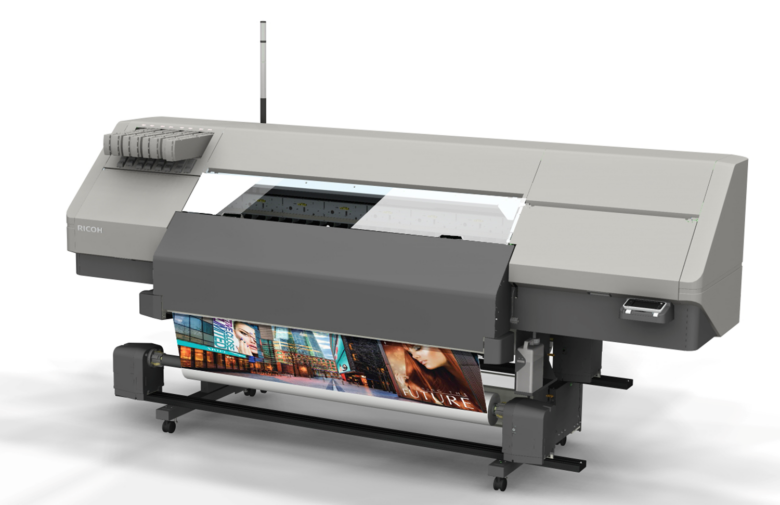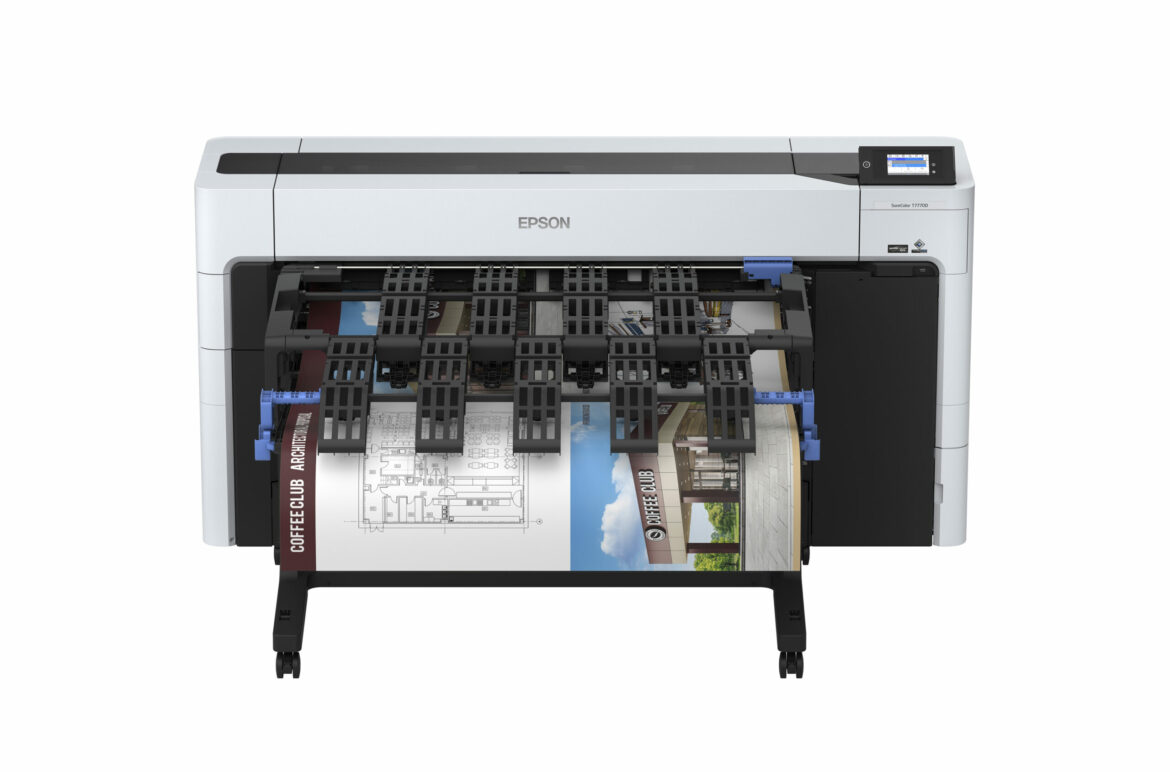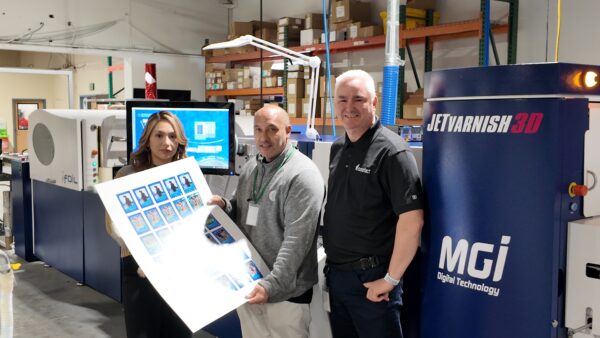Why wide-format printing should be part of your hardware and services offerings.
Pictured above: The Epson SureColor T7770D
In our June issue, I covered the business potential of wide- or large-format printing and how it can put money on the table for enterprising dealers. Bear in mind that “large format” is not limited to posters and displays. A lot of signage, especially in retail establishments or window signage in restaurants, is larger than A3 size and is commonly printed “multiple-up” on wide-format printers, then trimmed. There are, in fact, at least a couple of ways for dealers to live large.
Door #1
One way for a dealer to live large is to talk with an OEM or two about adding wide-format systems to their offerings. Doing so will require sales and service team training because there is a lot to learn about these machines and the markets they serve, but the new revenue lines for sales and support can be compelling. Even basic wide-format machines offer fatter margins than MFPs, plus they consume a prodigious amount of paper, so the ongoing revenue stream can be pretty interesting.

Above: The Ricoh Pro L5160
“Large format lets dealers diversify their portfolio,” said Brian Balow, vice president of production sales and solutions, dealer division, Ricoh USA. “By introducing solutions like large format to their current portfolio, dealers can leverage their existing infrastructure to cross and upsell while also accessing new markets, customers, and lines of business.” For example, print industry segments like quick printers and general commercial printers may already have these machines and need consumables and support dealers could provide.
Jacob Hardin, product manager for professional imaging at Epson America, noted that dealers have a lot of expertise to leverage. “Printer-copier dealers have the knowledge and capabilities of providing added-value services that surround printing already such as support, installation, technical assistance, guidance on selecting the right equipment, and supplying consumables. This makes large format a good fit and an opportunity for additional revenue streams that would otherwise wind up with a different vendor.”
This knowledge translates quickly to the sales side, giving a dealer’s team more technologies and capabilities to discuss with customers. It also quickly positions a dealer’s business as more than an MFP dealer. Furthermore, because wide-format printing is still putting text and images on a page, supporting such systems is less complicated than adding IT support or managed print.
Todd Smith, manager of product marketing for wide format and specialty products at Konica Minolta, suggests a different angle. “A dealer seeking to broaden their footprint could lead with wide format as way of getting into an account. For example, with a customer where they don’t already have foot in the door with a printer or copier fleet, the entry point could be large format. Copier and printer sales could come later.”
Door #2
The other way to go large is by offering wide-format print services. There are already dealers that offer a variety of print services that can help a company move toward being a one-stop resource for print services. At first glance, this seems like too much of a leap of faith, but it can work well. Yes, it is a different business model, but there are ways to make it work as part of the infrastructure for selling large-format printers. And the OEMs are eager to help. There are two ways to proceed.
The first is identifying an existing wide-format print provider looking for a partner or may even be open to an acquisition. This option can be appealing because such businesses are already familiar with the products and technologies, have some or all the ancillary equipment needed, have some skilled staff in place, may be more proficient at handling remote workflows and color management, and importantly, possess a customer base and track record on which you can build.
Some candidates might be small printing businesses (that may already be among your customers) that offer traditional printing services, as well as wide format. For a dealer, these could be operated as separate business units. Or dealers can choose to grow their own operation. DOCUmation, a prominent Texas dealer based in San Antonio, sells wide-format machines from several OEMs and has an independent print operation, making the company a print services resource for customers across Texas.
“We have provided large format since nearly our inception,” explained Hunter Woolfolk, DOCUmation’s co-president. “Our growth has been organic, and we have not made any acquisitions in large format or commercial printing.”
Woolfolk says he has not seen any significant challenges. “Anything printing-related is pretty simple to add to our current operations. The key is finding strong specialists to support our sales team for commercial print and large format. Once the sales team is confident in the production team, they are able to scale it quickly.”
“You need to know how your customers are getting large format today, whether they are already doing it in-house or outsourcing,” said Konica Minolta’s Smith. “A dealer needs to canvas its customer base and maybe target those who are outsourcing.”
Other aspects of wide format can provide new opportunities. For example, large format enables dealers to help expand a customer’s capabilities in collaboration and communication, two areas especially important to companies combining remote and in-office operations. “Bringing complex design visions to life requires extensive collaboration,” said Mercé Barcons, global head of large format go-to-market at HP. “Large-format architectural drawings and graphic renderings, for instance, help those involved in making edits and tracking progress.”
Barcons noted how wide format empowers rapid creation of campaign materials on substrates ranging from coated stocks to canvas for retail point-of-purchase displays. In landscapes driven by personalization and experiences, wide format gives brands the ability to create displays customized to a brand’s or company’s needs.
Homework Bound
Choosing Door #2 requires a business plan, thoroughly evaluating and understanding your competition and the market, and hiring people with the requisite skills to do the work. This can be a heavy lift, which may make partnering or acquisition more appealing.
If you choose to take on wide format yourself, be sure to do your homework. This goes beyond assessing your market, to the size of facility required and the equipment you will need. For example, wide format doesn’t stop with memory-rich computers and lots of storage capacity, or even the printers. Media is critical and is far more involved than for MFPs.

Above: The Epson SureColor T7770D
“Be prepared to learn a lot about media, color management, and ink technologies,” said Epson’s Hardin. “The more you know about what your large-format printers can (and cannot) print, the more solutions you can offer to your customers, and the greater chance of success you’ll have in meeting their expectations on quality or consistency.”
Lamination, for instance, is often required and is usually inline or near-line, while trimming adds an extra step. It is usually done using an automated trimming system, most often on a flat table with air suction to hold a print so it can be trimmed. Then a software-driven, high-speed trimming blade, somewhat like a plunge router used for woodworking does the work. Such a system is one you can sell along with a wide-format printer. Most wide-format printer OEMs have arrangements with one or more of the trimmer vendors, providing an excellent starting point for choosing a trimmer to go with a press. Because it is based on a computer file, the process is automated but still requires operators who know how to make it work.
In addition to using a wide-format printer and trimming system, a dealer’s team needs to be comfortable with remote job submission, pre-flighting print files, and color management. People with these skills can be found and hired, but not all applicants are ready or able to take on wide-format work. It is a place where experience matters. This is why in some markets, dealers seeking to branch into wide-format print services may find it more effective to partner with or acquire another firm.
A Diversifying Opportunity
Wide-format printing is a compelling opportunity and can be a great differentiator, especially if your company also sells the equipment. There is also an interesting crossover point that may provide an entry into directly offering wide-format printing services. Consider locally-owned restaurants, grocers, and retailers that may already be customers for your MFPs and copiers. Some also need large POP signage or banners for internal and external use. Some presently outsource such printing because they can’t justify the cost of a printer and a cutter. Learning about these needs can come from a sales conversation and tell you they might be good candidates to become print customers. You could begin by taking on some of their easier jobs and go from there.
“The trend of users seeking a single source for all their printing and IT departments looking for solutions that work together on their network only adds to the case for adding large format to an existing copier-printer portfolio,” said Epson’s Hardin.
Ricoh’s Balow agrees: “Dealers that diversify their portfolios with large-format solutions and services offer customers more value. With more offerings, they can deliver more impact for their customers and more routes to revenue for their dealerships.”
Access Related Content
To become a subscriber, visit www.thecannatareport.com/register or contact cjcannata@cannatareport.com directly. Bulk subscription rates are also available.




